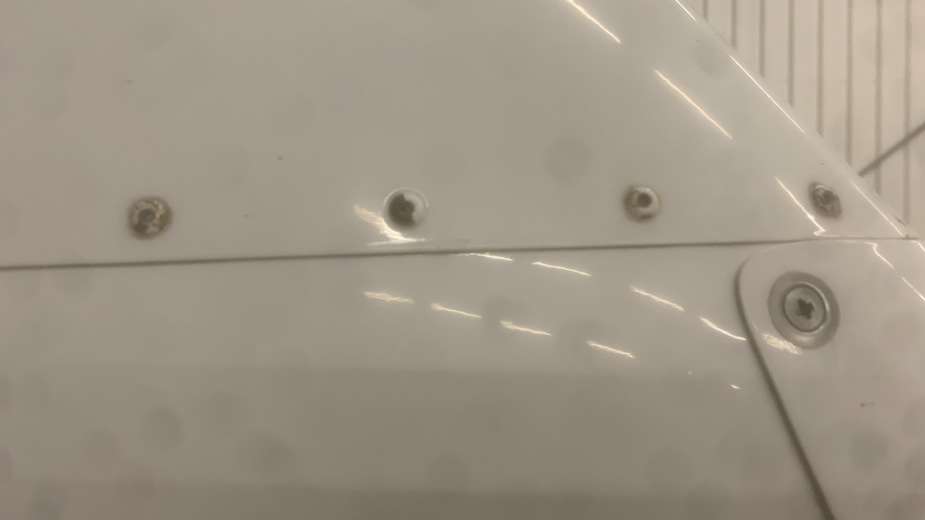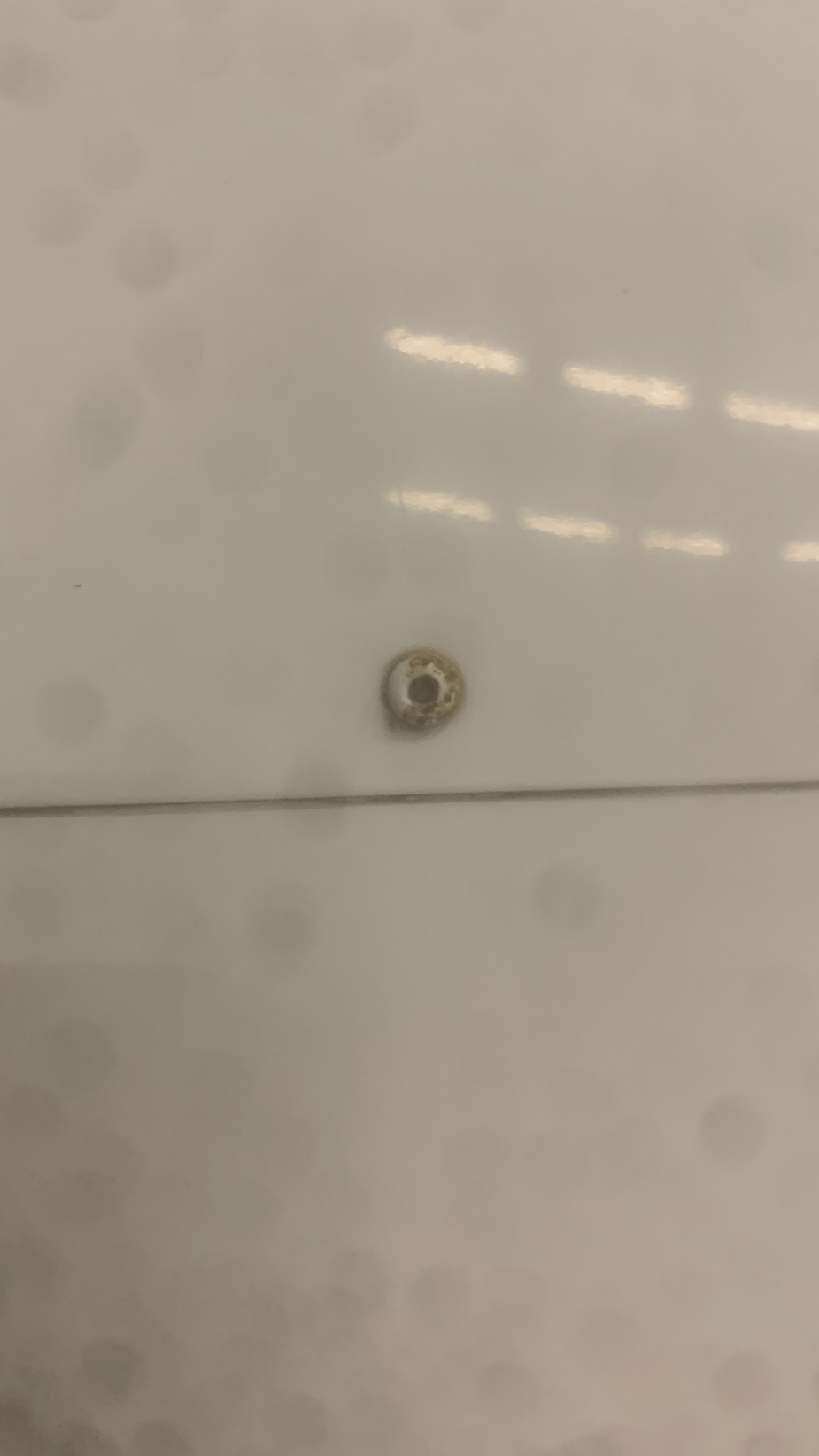I think one of the largest misunderstandings is the function of alclad. Alclad per def. is when the clad (coating) is anodic to the core material. The cladding electrochemically protects the core at exposed edges and at abraded or corroded areas. Thus the cladding corrodes and not the core material. Puncturing a plate by drilling a hole, it is the cladding that stands a chance of being corroded, not the core. Think of it as zinc coated steel.
For the usual aircraft sheet metal, 2024, cladding is done with “pure” aluminium (unalloyed aluminium, or 1xxx series). Pure aluminium is very weak, but highly resistant to “normal weathering” corrosion. However, if it is anodic to some other material (the core in 2024 alclad), there is nothing preventing it from corroding first.
The stronger alloy, 7075, also used widely in aircraft, is normally not cladded, because it is anodic to pure aluminium. Pure aluminium will still protect it, if the clad is perfect, but the slightest hole will cause a cell where the core material will corrode. 7075 is usually cladded with 7072, which is more anodic to 7075, but nowhere near as resistant to corrosion as unalloyed 1xxx.
6061 (or similar) is the “best” all round structural alloy, also used extensively in aircraft. It is strong, but not as strong as 2024, only 70-80% or so. It has much better corrosion protection, and normally needs no extra protection in atmospheric use, be it clad or paint.
For marine applications, the 5xxx series rules. Almost as strong as 6061, but literally 100% corrosion proof, even in seawater, and perfectly weldable. Being weldable is very important for marine applications as it will remove most joints, bolts and rivets where corrosion usually is a problem.
For small aircraft using standard aluminium semi monocoque design principle, it is not the strength that is limiting. It is the rigidity and practical issues. You can only make a sheet of aluminium so thin before it becomes practically useless. Why no one has yet made an aircraft out of 5xxx series, welded together, 100% impervious to corrosion, is a bit of a mystery. The only reason I can see is that composite, in particular carbon, is a much better alternative. Stronger than any aluminium, alloy yet 100% impervious to corrosion.
There is a standard way of relative ranking aluminium alloys with regard to corrosion. A to E, where A is best, E is worst. Roughly speaking A and B means it can be used in industrial and seacoast atmosphere, unprotected, with no danger of corrosion. C, D and E must be protected, at least on faying surfaces. The difference between A and B is that B has shown susceptibility in extensive laboratory tests, but no issues have been seen from real world experience. General corrosion and stress corrosion cracking.
1xxx: A for general and A for cracking (pure aluminium)
2024: D for general and C for cracking (most widely used aircraft alloy)
5xxx: A for general and A for cracking (alloy for marine applications)
6061: B for general and A for cracking (general purpose alloy also used widely in aircraft)
7075: C for general and B for cracking (very strong alloy, used in aviation)
An interesting map from a Cessna SID document. Never saw any like it before

We all know americans aren’t the greatest at geography  (see Liverpool new location)
(see Liverpool new location)
I would have thought the Castilian plains would be the closest Europe has to Arizona and New Mexico
I’ve seen a similar Cessna map for the whole world, it’s useful to get you thinking. Bear in mind that the climate and proximity to the ocean are a major, though not only factor in a corrosive environment. Local air quality is also a major factor. Pollution around and downwind of cities is a big factor. At one Toronto area airport, well inland of the lake, corrosion for airplanes stored outside is an issue. Hangared planes are much better off. The reason is that the airport is downwind of a major highway which is heavily road salted in the winter, and the salty air blows over all the parked planes. I’ve seen a couple of planes which have been there for years be scrapped for corrosion which I’m convinced would otherwise not have been a factor.
The mid-2000s C172 that I flew in Maui in 2019 looked like it wasn’t going to last much longer – the corrosion problems at that airport looked awful: constant warm salt water spray.
Hello,
Out TB20 is currently undergoing it’s annual, and we are a bit puzzled about possible corrosion in the elevator. It’s kind of a “sand-feel” debris over a constant horizontal line in the elevator ends/ribs. We can rub it off, with pressure and without damaging the primer.
Does this look like any type of (possibly intergranular) corrosion?



Thanks for your opinions.
Patrick
Hi, it is difficult to tell from the pictures, so let me start by saying that really the on-site maintenance technician should make the call.
If you are talking about the grey horizontal line along the end rib in green primer, it does not look like corrosion but whatever it is , it seems superficial, mild and easy enough to deal with via a light rubdown, alodine and re-primer. Your maintenance manual most likely has some procedure along these lines.
If after a light rub-down you see there are still defects in the aluminum then you need to dig deeper, but I doubt it is the case.
For corrosion protection I use ACF-50 where access is easily repetitive every year or two, or LPS-3 where there is only occasional access.
From my view way over in the states, that looks like it had standing water in it for some reason if that is possible. I’d say not a concern, clean it, then if you can get some coating like ACS 50 or even LPS 3, will last longer than you will be flying LOL. Carl
A common reason for elevator corrosion is that instead of using the correct control lock (which holds the elevator with the drain holes at the bottom) people tie the yoke with the roof rack type of elastic bands to the seat and then a part of the elevator fills up with water.
This is a problem with many types, not just TBs.
Usually the corrosion is much worse than the above photos show. I have quite a collection of photos from years past which people sent me. Like this one

One needs to use ACF50, every year or two, and it may need the drilling of some holes at the two ends of the elevator so the spray nozzle can be inserted, although it can be done without that.
I don’t know to what extent Socata co-operates with repairs. I know for a fact that the vertical stabiliser is regarded as a “critical” part and no repairs are permitted by Socata. This is probably a fairly typical European restrictive practice… There is/was this AD.
Dear all, after cleaning and inspecting one detects minor signs of corrosion. Here eg of some rivets. What do you recommend to stop corrosion in this stadium?
